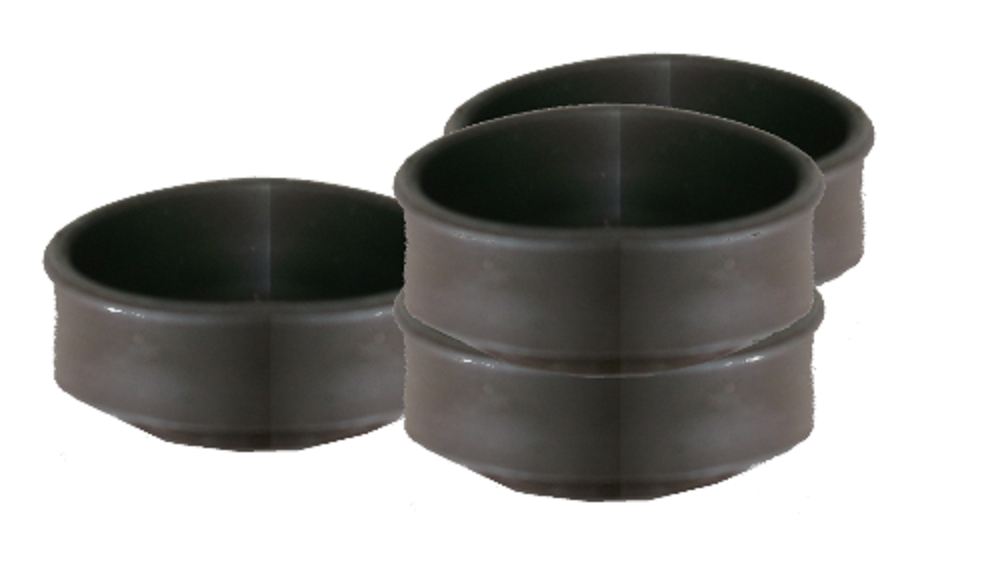Check that the feet are level and the right length
Hold your washing machine at the top
and try pushing it diagonally back and to the left, or back and to the right. If the washing machine wobbles when you push,
then the feet need adjustment. Most washing-machines have feet attached to a 30 mm threaded rod, by turning the feet
they can be made to move in or out. The ideal length to leave protruding is 20 mm. If the washing-machine
can wobble back and to the right, lengthen the front left leg until it has the same tension as the front right leg.
If it can wobble back and to the left, lengthen the right leg until it has the same tension as the left leg.
If the legs are longer than 20mm, you might consider shortening them both a bit. If they are drastically unequal
in length when they are tensioned correctly, you should equalize the rear legs before stabilizing the front legs.
If you cannot turn one of the feet, the threaded rod might have a locking nut at the top which you will need to
loosen with a wrench before you can adjust the feet.
Check that locking nuts are secure
If the feet spin easily, they can easily come out of adjustment. To prevent this, check if there are
locking nuts at the top of each threaded rod and tighten as desired to lock your adjustment in place.
Check that transit bolts are removed
If a washing-machine shakes violently during the spin cycle even when the feet are adjusted, the next thing to
check are the transit bolts.
Transit bolts are a type
of plastic or steel bolt which prevents the drum from wobbling inside the washing machine during shipping and installation.
If a washing machine is installed without following the instruction manual, these bolts can be left in place,
sometimes for the whole life of the washing machine.
To check for transit bolts reach inside your washing machine and press down with your full weight on the
inside of the drum. If the is free to move downwards three or more inches, this implies the transit
bolts were correctlyh removed. If the drum cannot be made to move three or more inches
the transit bolts are likely still holding it in place, which will cause the whole washing machine to shake during the spin cycle instead of just the drum
inside. In that case you need to locate and remove the transit bolts. Here are links to photos showing how to
remove the transit bolts from some common brands
You can also
Browse or Download All Common Washing-Machine Manuals
Balance the load
Once the feet are adjusted and the transit bolts removed, some problems of vibration are just a matter of
load balance.
Load balance is especially important for
top-loading washing machines. For a top-loading washing machine, you must make sure that the
fabric of about the same weight is distributed all the way around the center column. For example, lay
towels in a circle so that there is never more towel-material on one side than another. If you are
washing only one or two items, add a few towels or shirts to even out the load.For a front-loading washing machine,
evening the load is your best bet. Donít wash just one heavy-fabric item, which will rise and fall alone inside
the drum. A more complete load is best. Wash several items of similar weight with each load. And, of course, try to avoid
overfilling your washing machine.
Replace the Shock Absorbers
This is a possibility for older washing machines. If your washing machine
has functioned correctly for a few years but is increasingly shaking during
spin cycle, the shock absorbers may be worn and in
need of replacement. It may be cost-effective to replace the machine. Washing machine shoes can
extend the effective life of a washing machine by helping to eliminate vibration (see next section).
Use soft washing-machine shoes
Once the feet are even and transit bolts are removed, some washing machines still have an unacceptable
vibration which can cause them to walk or move out of place, or can cause excess noise. This is usually
a combination of loads that are
not perfectly balanced, older machines
which have less-than-perfect shock absorbers, or very new machines which are a bit too ambitious about
spin speeds. For these situation we supply the ideally recommended set of four washing machine shoes (size medium, suitable for feet
of width 30 - 40 millimeters, color brown, cost £2.50). If you happen to live in Royal Mail's domestic shipping area (comprising England, Ireland, Scotland and Wales)
you can support our site while helping to solve
the problem of washing machine vibration by visiting the link
here or search
Google Shopping for "washing machine shoes" or you can just click the image below.
 More...
More...




 Added to basket
Set of washing machine shoes: £2.50
Added to basket
Set of washing machine shoes: £2.50
 More...
More...